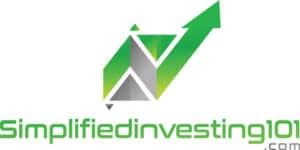
Cash accounts in Canada are used to invest in stocks, mutual funds, GICs, ETFs, and other kinds of investments. Unlike margin accounts, cash accounts do not have access to margin (borrowing money to invest).
In a cash account, the amount of investments is limited to the amount of cash deposited. On the other hand, margin accounts are used to borrow money to buy more stocks or other investments.
Also, investment choices are limited in a cash account. Most investing platforms do not offer options trading (more speculative) in a cash account.
Maximum losses in a Cash Account
Cash accounts are great to start investing since losses are limited to the amount of funds deposited. On a margin account, it is possible to lose more than the amount invested.
For example, the maximum loss on a $5,000 investment in a cash account is $5,000 which can happen if stock investments go bankrupt. On the other hand, a $5,000 investment in a margin account can end up losing $8,000 or more if the margin is used to borrow more capital to invest.
In the second scenario, the margin account holder will owe $3,000 to pay back the borrowed money on margin. In a cash account, the amount of investments is limited to the cash deposited.
Cash Accounts in Canada
The kind of investments in a cash account differs for every investing platform.
1. RBC Direct Investing Cash Account
- Stocks
- Mutual Funds
- ETFs
- Fixed Income (Bonds, GICs)
Commission Fees: $9.95 for every buy or sell trade of stocks or ETFs
Each of these investments will be explained after the list of cash accounts in Canada.
2. TD Direct Investing Cash Account
TD Direct Investing offers similar investments to RBC Direct Investing.
- Stocks
- Mutual Funds
- ETFs
- Fixed Income (Bonds, GICs)
Commission Fees: $9.99 for every buy or sell trade of stocks or ETFs
3. Wealthsimple Trade
- US stocks and ETFs
- CAD stocks and ETFs
Commission Fees: $0 for CAD stock and ETFs, 1.5% fee (exchange rate fee) for US stocks and ETFs
Wealthsimple Trade calls its cash account a Personal Account. A personal account is essentially a cash account. In addition to Personal accounts, Wealthsimple Trade also offers TFSA and RRSP accounts.
Minimum Requirement: $0
Most people typically use Wealthsimple Trade for Canadian stocks and ETFs since there is no fee and other platforms for US stocks and ETFs.
Investments in Cash accounts in Canada
Aside from GICs and savings accounts, these assets below can be invested in a cash account. GICs and savings accounts have the lowest risk and the lowest payout among different kinds of investments.
These assets below have higher risks and upsides. Losing money is possible on these investments below.
Stocks
Stocks are ownership of a company. Stockholders are entitled to the current and future earnings of a company. Stocks can be bought or sold when New York Stock Exchange (NYSE) or TSE (Toronto Stock Exchange) is open. TSE and NYSE are open Mondays to Fridays 9am to 4 pm ET except for holidays.
Returns for every stock vary. There are thousands of stocks in the US and Canada. The most common stocks are Apple, Google, and Amazon.
These companies have billions of stocks in the market. For simplicity, let us say a company have 100,000 shares outstanding. In this case, 1 share = 0.001% ownership of a company.
The two main kinds of stocks are value stocks and growth stocks. Growth stocks have high P/E ratios (above 30) and have a high risk/reward. Value stocks have a lower risk/reward and have P/E ratios below 20.
ETFs
ETFs (Exchange Traded Funds) often function as a diversified version of stocks. For example, ETFs like SPY, VOO, and XUS copy the return of the stocks in the S&P 500. Instead of purchasing each of the 500 stocks one by one, investing in an S&P 500 ETF is a simpler way to invest in all 500 stocks.
Also, there are ETFs for dividend stocks, international stocks, value stocks, etc.
ETFs usually charge 0.10% to 0.80% per year.
Bonds
Bonds are debt of a company or government. Bondholders are promised to be paid back by a company or the government after a period of time. Government bonds are often thought of as the least riskiest bond since the government can simply print money if they have financial difficulty.
In the event of bankruptcy of a company, bondholders are prioritized to get the assets of the company while stockholders are wiped out most of the time.
Mutual Funds
Mutual Funds are funds that are managed by professionals. Mutual funds can manage stocks, bonds, or a mix of different assets. Professionals determine when to buy or sell the assets in a mutual fund.
Mutual funds charge higher fees of around 0.50% to 2.00% per year. In addition, most mutual funds charge fees when initially buying a mutual fund or when selling a mutual fund.
Margin Accounts in Canada
Most big banks offer margin accounts. Margin accounts are typically used for day and swing trading to have access to more funds. Also, margin accounts offer call and put options which are used to take more risk for a higher potential upside.
Margin accounts can be used as cash accounts. Borrowing money to invest in a margin account is optional. Interest rates will only be charged when a margin is used.
However, margin account holders have to monitor that margin is not used by making sure that the amount of cash is enough to buy stocks or other assets. Margin is automatically used in a margin account when the amount of cash is not enough to purchase an asset.
Questrade Margin Account
- Stocks
- Bonds
- Mutual Funds
- Call and Put Options
- Precious Metals (Gold, Silver)
Cash account vs TFSA
Profits in non-registered cash accounts are taxable while gains on a TFSA (Tax-Free Savings Account) are tax-free. At the same time, losses in a non-registered cash account are typically tax deductible for future gains while losses in a TFSA account are not tax deductible.
Funds deposited to TFSA and cash accounts are usually not automatically invested. Instead, account holders have to purchase investments like stocks, GICs, and mutual funds inside cash or TFSA accounts for the funds to be invested.
